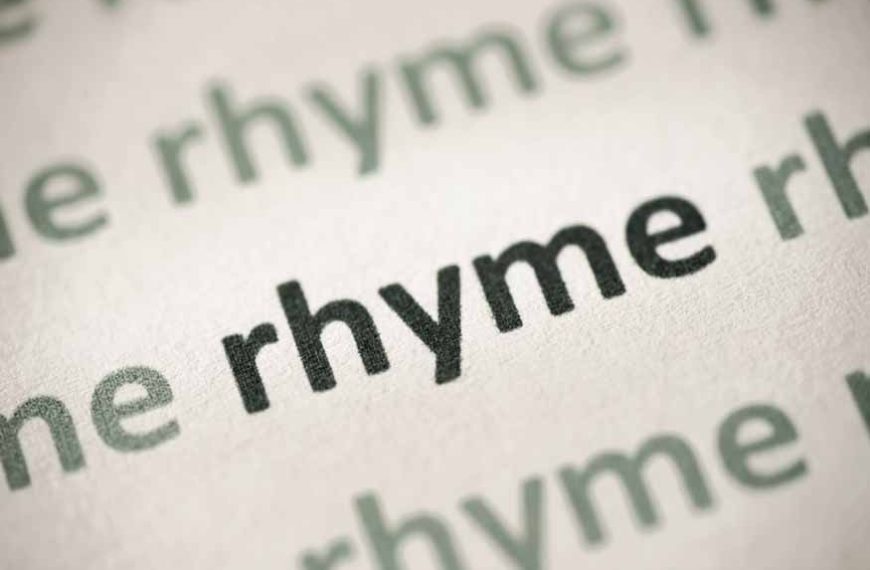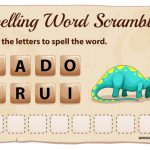“Experts in literacy and child development have discovered that if children know eight nursery rhymes by heart by the time they’re four years old, they’re usually among the best readers by the time they’re eight.”
Mem Fox, Reading Magic.
Have you ever wondered why rhyming is important for kids?
In early childhood, language development is one of the 5 main development skills that takes place, the others being, cognitive skills, emotional skills, social skills, and motor skills. The development of these skills is very important as they lay the foundation for later years. As is the case with all skills, language development also stands to benefit with practice.
In this blog you will learn all about rhyming words which are pillars for early language skills.
3 Methods to Develop Rhyming Words for Children
The more you practise with your little one the better will be their language skills. A few ways to develop this skill are:
- Talking to your child
- Read to them
- Sing and listen to nursery rhymes
Use simple words initially and talk slowly. As they grow older you can initiate a conversation based on their interest. You can talk about the food they are eating or the flowers they are looking at in the park or even the clothes they are wearing. Ask questions and wait for them to respond, prompt them if required to get the conversation going. It is important to teach rhyming words for kids to foster their language development.
The more you read, the more words they listen to. Reading the same book repeatedly builds familiarity and helps children recognise and learn new words and early rhyming words.
Nursery rhymes are a great way to teach rhyming words for kids. Through music children pick up rhythm and understand the flow of words and learn the dynamics of a language.
Learning a language through songs and rhymes can be a lot of fun, and it is also good for cognitive development as well as it gives children a chance to think and assimilate all that they are listening and responding to. Learning and understanding how rhyming works is a skill that will be tremendously beneficial to them in their literary journey as they will learn to sound out new letters and words. Rhyming words for kids also encourage creativity and cognitive development.
Why is it Important to Know About Rhyming Words? Discovering 5 Key Benefits
Did you know that playing activities of rhyming words with your child can be fun and informative?
Rhyming is Important because –
- Early rhyming words are fun, even if the rhyming is done with nonsensical words, remember your child is still learning and as long as they get the sounds right it is okay, this enhances their cognitive development. E.g. If they rhyme ‘mop’ and ‘fop’, the sound pattern is still correct even if the word ‘fop’ doesn’t mean anything.
- It helps children find patterns within words and associate them with word families.
- Once children can identify word families, it makes it easier for them to learn spellings.
- When children learn that certain letters put together make a specific sound then putting another letter in front of it can help them form a word and then make word families, this association helps them break up new words to read or spell when they begin reading and writing. E.g. /a/+/t/= at, /c/+ at=cat, /s/+at=sat, /m/+at =mat, and they will soon be able to read the sentence ‘A cat sat on a mat’.
- Rhymes and rhyming words teach children the nuances of the language and aids language development known as phonemic awareness and comprehension.
Rhyme Roadmap- Understanding 3 Main Stages of Learning
Children learn rhyming words in three stages, and each stage builds on the skills learnt in the previous stage. The stages are-
- Hearing
- Recognising
- Producing
The more the children listen to rhymes and rhyming words the sooner they will be able to identify rhyming patterns. For e.g., the rhyme ‘one two, buckle my shoe’, two and shoe rhyme, encourage them to listen and find more rhyming pairs
Once they identify rhyme patterns, you can begin to introduce them to rhyming vocabulary or rhyming words from the same ending sound family, e.g. words ending in ‘in’, pin, bin, fin, tin, win etc. or words in the ‘op’ family – top, mop, hop, pop, etc.
As your child begins to fully understand the concept of rhyming words, you will notice them using it in their day to day lives making up songs and rhymes of their own.
How to Teach Rhyming Words to Preschoolers? Discovering 4 Interesting Ways!
Reading books with rhyming words can help children with auditory awareness. Teaching rhyming words to your little ones can be done in many fun ways –
- Listen regularly to songs and rhymes which have a lot of obvious rhyming words in it. E.g. ‘1, 2,3,4,5 once I caught a fish alive’, ‘open them, shut them’, ‘twinkle twinkle little star’. etc.
- Have some family fun seeing how many rhyming words can be made in a row with the same ending. Nonsensical words add to the enjoyment. E.g. ‘-at words’- mat, cat, bat, sat, dat, fat, gat, hat etc. – here dat and gat are nonsensical words but still fit the rhyme pattern.
- Read rhyme books – the more you read books with rhymes in them the faster your child will pick up the rhyming patterns.
- Give your child rhyme based activity cards or worksheets for them to solve by themselves, encouraging them to say aloud each word/ picture that they see. Hearing the words will help them solve the activity.
Rhyming Activity! 4 Steps to Introduce Rhyming Worksheets to Kids
Here are a few examples of the rhyming activity cards or worksheets you can make for your preschooler.
- Start of simple, on a sheet of paper have two easy to identify pictures, you can then have either a single square at the bottom of the page for your child to colour in red or green, or you can have two squares one with a tick sign in it and the other with a cross sign in it. Your child will have to colour in or circle the correct sign. E.g. moon and spoon, bat and mat, door and 4, frog and bug, dog and ball and so on.
- Make worksheets like the ones shown below, you can either give them different colours for them to match the rhyming pairs or you can stick the paper on a cardboard, punch holes in it and have your child match the pairs like a lacing activity.
- Make another type of card or worksheet as shown below, help them with cutting out the pictures at the bottom of the page and let your child place or stick the right rhyming pairs in the blank boxes provided.
- Once they get a hang of the above activities, you can challenge them a bit by taking two or three rhyming pair pictures and cutting them up to separate them. Then scramble the pictures up and place them on the table in front of your child. Let them match the rhyming pairs, as they become proficient you can slowly increase the number of rhyming pictures that you place in front of them.
Conclusion
These activities are not easy to master so give your child time to figure out for themselves how it is to be done. However, if you find frustration building up or your child losing interest, you can prompt them in the right direction. Do these activities periodically over a span of a few weeks so that your child gets enough practice and soon they will become proficient in rhyming words.
At EuroKids, the teachers know the importance of language development and regularly conduct various activities to help your child develop this skill. Click here to find a centre near you. Enrol your child and ask for an opportunity to talk to a teacher to find out different ways in which you can help your child in their Language development.
For informative and accurate articles on all things related to your new born-toddler’s development, growth, health and nutrition, follow EuroKids Blogs and do check out our nationally recognized preschools – EuroKids for the first step in your kid’s educational journey!















